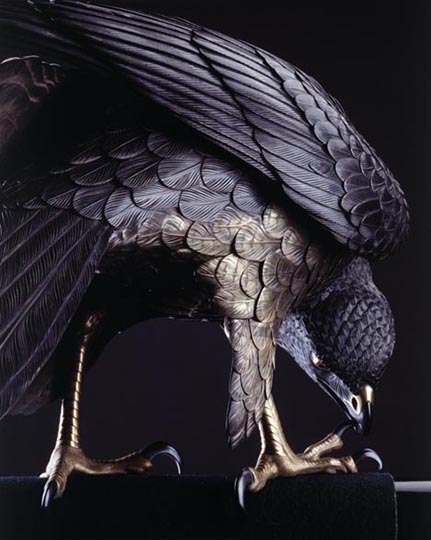Passions and crafts: when you see those words side by side, what sorts of things do you imagine? For example, do you think of a ceramic artist conducting repeated experiments in search of a color never before seen or a new texture? That indeed is the classic form of passion in the crafts. The potential in the vocabulary of the crafts for combining materials and specialized skills in all their variety is infinite. The more sophisticated the craftsman’s mastery, the more acute the concentration, with a tendency to place great emphasis on the excellent finish of the work.
Some, however, may find passions and crafts an odd pairing. In the crafts, which by nature have a functional element, all sorts of intentions are made to converge in the creation of a work. The result is designed so that we might only experience those elements engaged in its creation in terms of its decorativeness or its feel. Perhaps that is why we might, if we are being somewhat thoughtless, find that the scope for appreciation of the crafts is limited. And what a waste that would be!
But a tendency to be a bit thoughtless cannot be attributed only to the nature of the crafts. The word “craft” (kogei) became the name of a genre, as we use it today, in Japan, in the Meiji period (1868-1912), when Western standards for the arts were imported and their adoption seen as carrying the flag for modernization. In the interpretation of the term “art” (bijutsu), “craft” was the general term for things that did not make the cut when viewed in the light of those imported standards. The term kogei, “craft,” taken from classic texts, was applied to those supposedly lesser works. Since then, the context for appreciating the crafts, within the social system at large and in the classroom, has tended to be full of noise. And that is despite that the fact that we Japanese have been appreciating those works’ value from at least as early as the Heian period and that such works came to be placed in the tokonoma alcove, a sacred space within everyday life, to be viewed and enjoyed. What a waste!
But the modern era has brought about opportunities to tackle reassessing those waters, muddied as they have become by diversity and ambiguity. If we can say that at one time the prestige of our nation was staked on defining the crafts as beauty in utility, then we can restate things to say that they are useful and beautiful and to try measuring the distance from the self, applying traditional or avant-garde terms. In that process, we might be expected to be searching for standards that are in touch with the wider world, but, surprisingly, we confront “Japan.” Crafts and Japan: works stimulated by the phenomenon of overlapping those two images have been on the increase in recent years.
For this exhibition, we have selected from the words, the actions, and the achievements of the artists who exemplify the modern crafts, to present their passions as they each face their own phases, junctures, situations. Should you wish to compare the trajectory of the crafts that comes to light through this exhibition with the situation in modern art, please also visit the National Museum of Modern Art, Tokyo, a mere five-minute walk away. Please also note that this exhibition will be the last to be presented in the Crafts Gallery in Tokyo.
